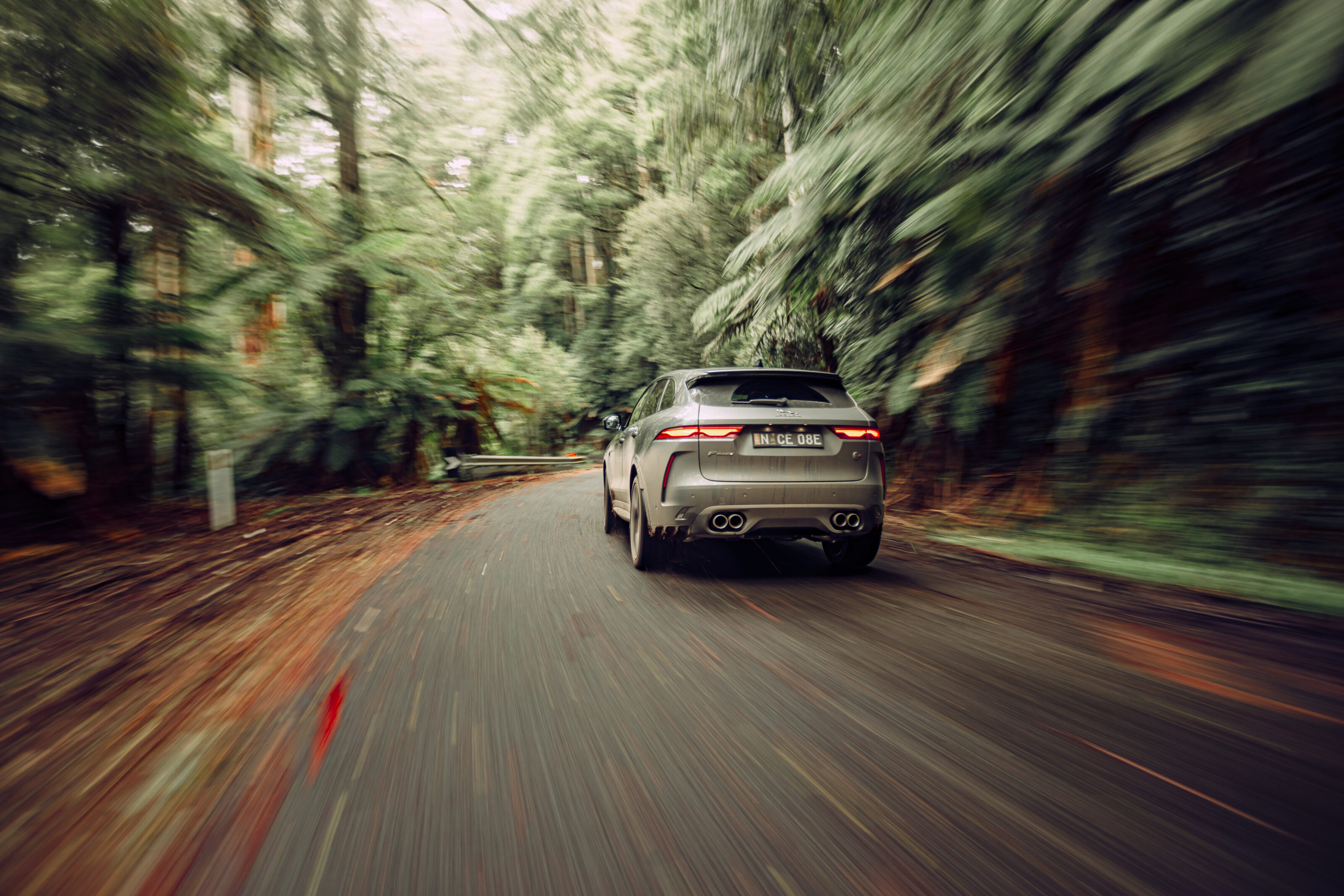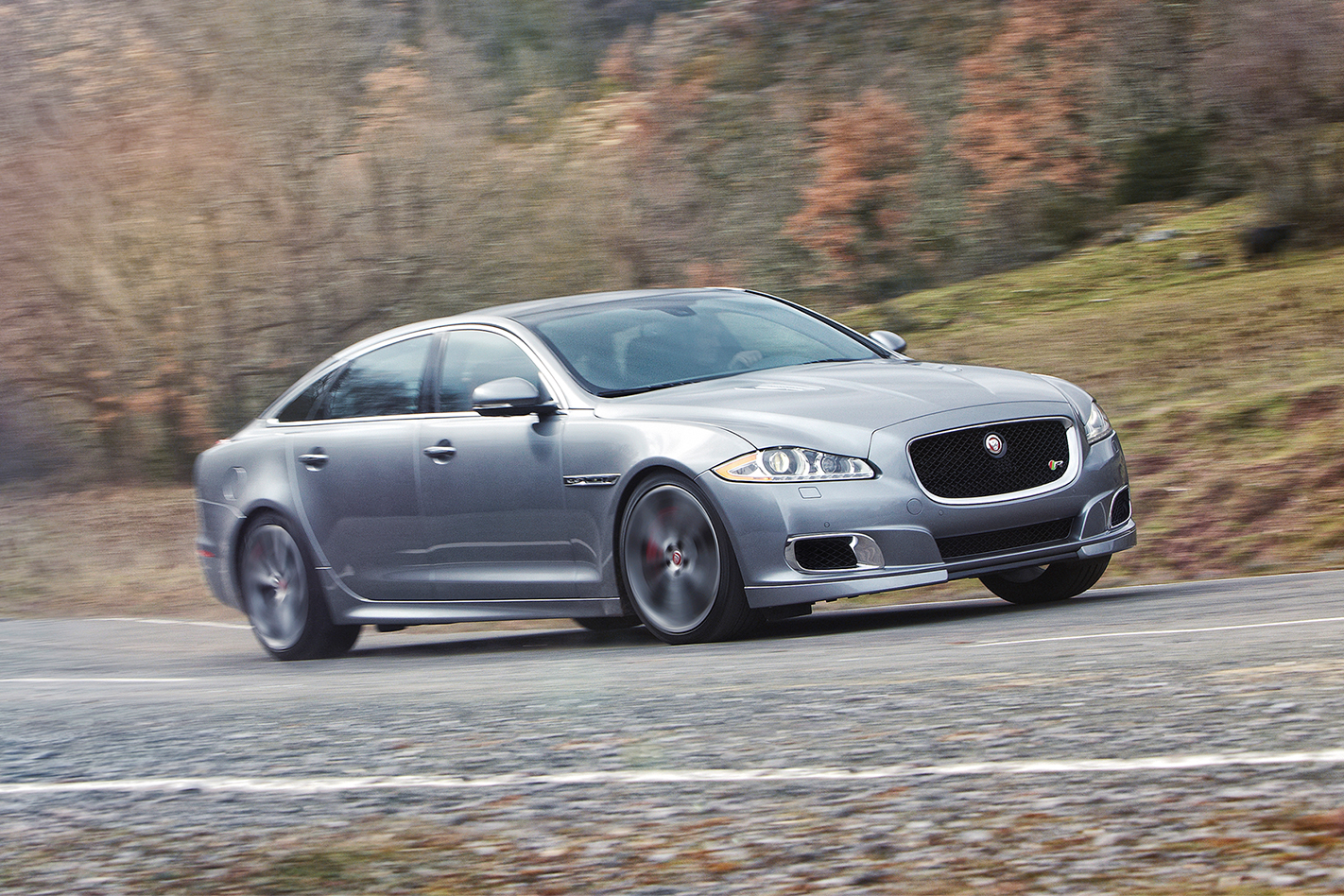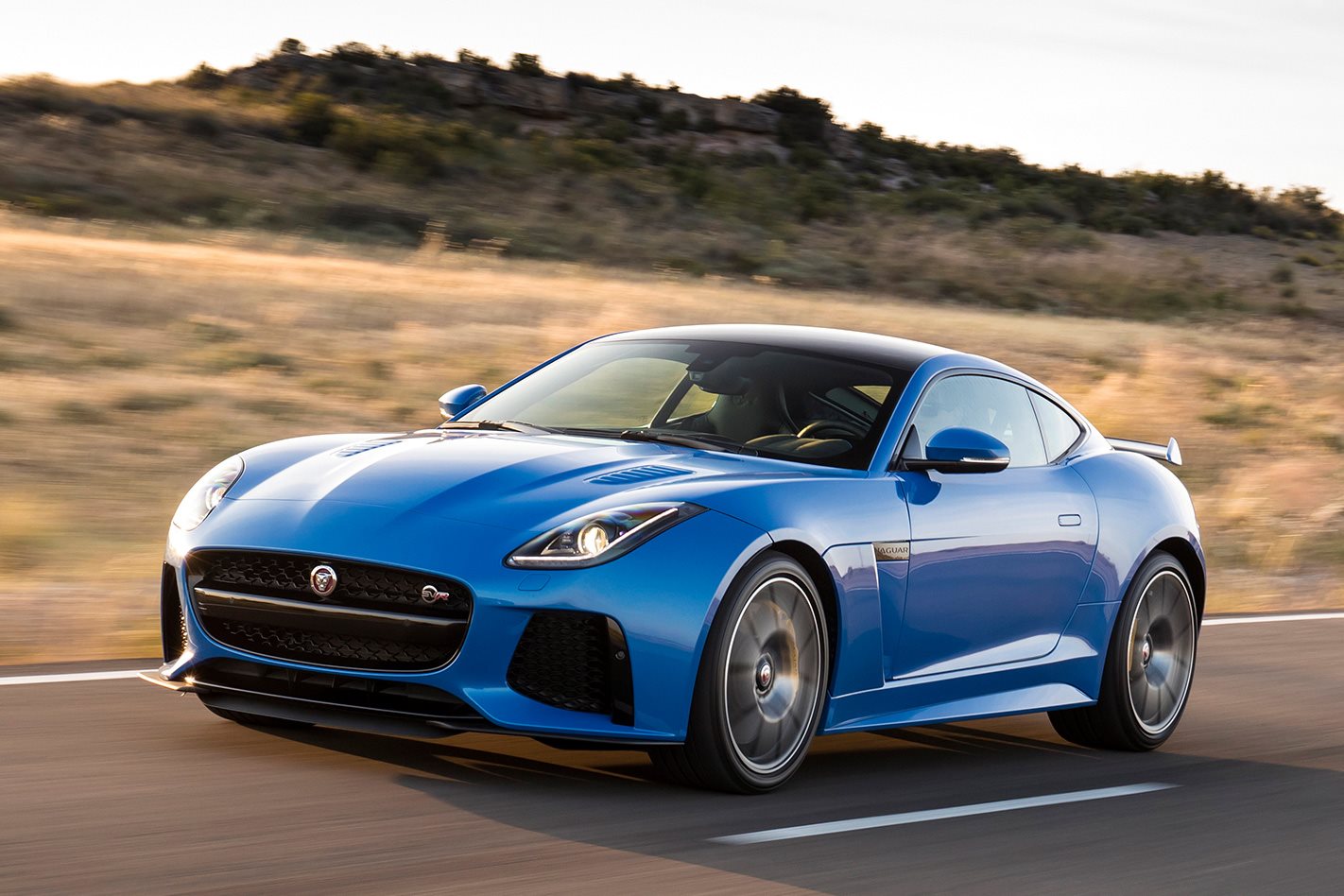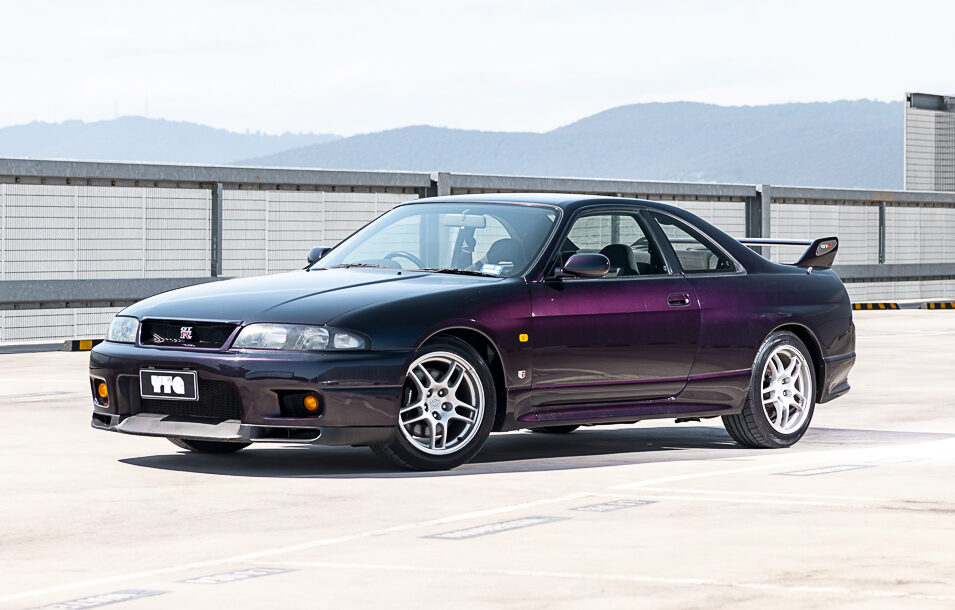Things we like
- V8 soundtrack
- Close-ratio ’box
- Engine response
Not so much
- Thirst for fuel
- It’s on death row
- Increased weight
The air in Beech Forest is still and undisturbed. The waters of Bass Strait meet the lazy flow of Skenes Creek 15 kilometres to the south east as the magpie flies, but there is no salty sea breeze rustling the trees in this once bustling timber town.
Instead, on an overcast and drizzly day in the middle of yet another open-ended state-wide Victorian lockdown, the living world has seemingly abandoned Beech Forest, population 82, altogether. The door to the only pub in town is locked indefinitely, and there isn’t a single visible soul wandering the streets. The only sign of life here is the soft sound of birdsong that emanates from the myrtle beeches.
The inside of the Jaguar F-Pace SVR is an Alcantara and leather-trimmed cocoon, helping shield me from the light misting of rain that is falling. The clouds hang low, as nature slowly encroaches on the edges of the narrow tarmac scar – C159 – that runs through the hamlet.
It’s a path that a few kilometres from here transforms into Turton’s Track, a road that when looked at on a map promises to be as challenging as the finest WRC tarmac stage. Traditionally clogged with tourist traffic, it is currently bereft of travellers. That is, except for me and the Jaguar F-Pace SVR.
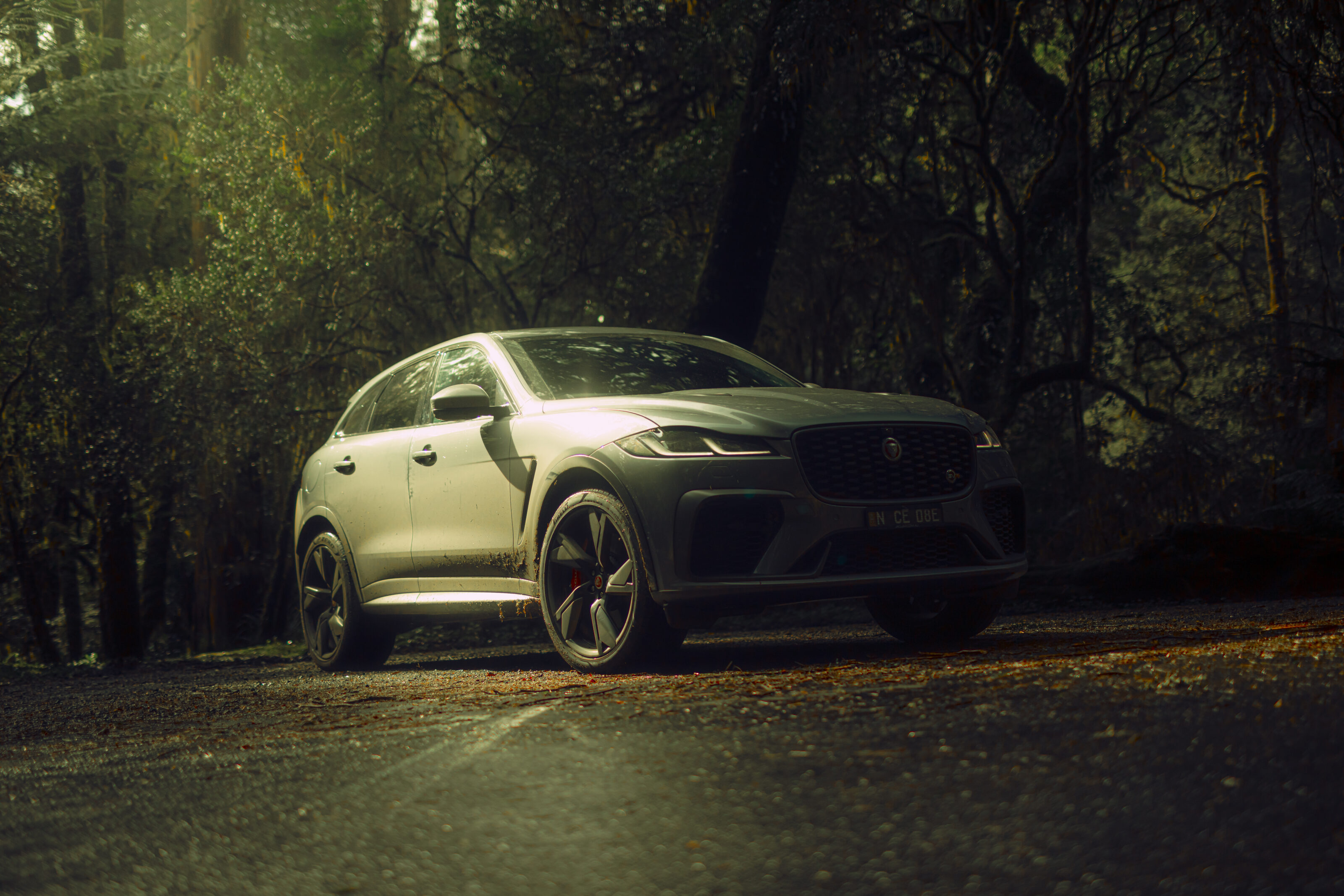
Ba-bum. Ba-bum. Ba-bum.
There is no sound, but the SVR’s starter button flashes with the anthropomorphised rhythm of a resting heartbeat.
Ba-bum. Ba-bum. Ba-bum.
The constant but silent beat compels me to press down, firing the 5.0-litre supercharged V8 engine under the SVR’s bonnet to wake from its slumber. The chirping of birds is drowned out as combustion chambers ignite and four exhaust tips flare into a rasping report.
Subtlety will not be today’s overarching theme. This engine is on death row, and its final meal is set to be the 32 kilometres of tarmac between here and the outlet of Skenes Creek, washed down with a tank of premium unleaded.
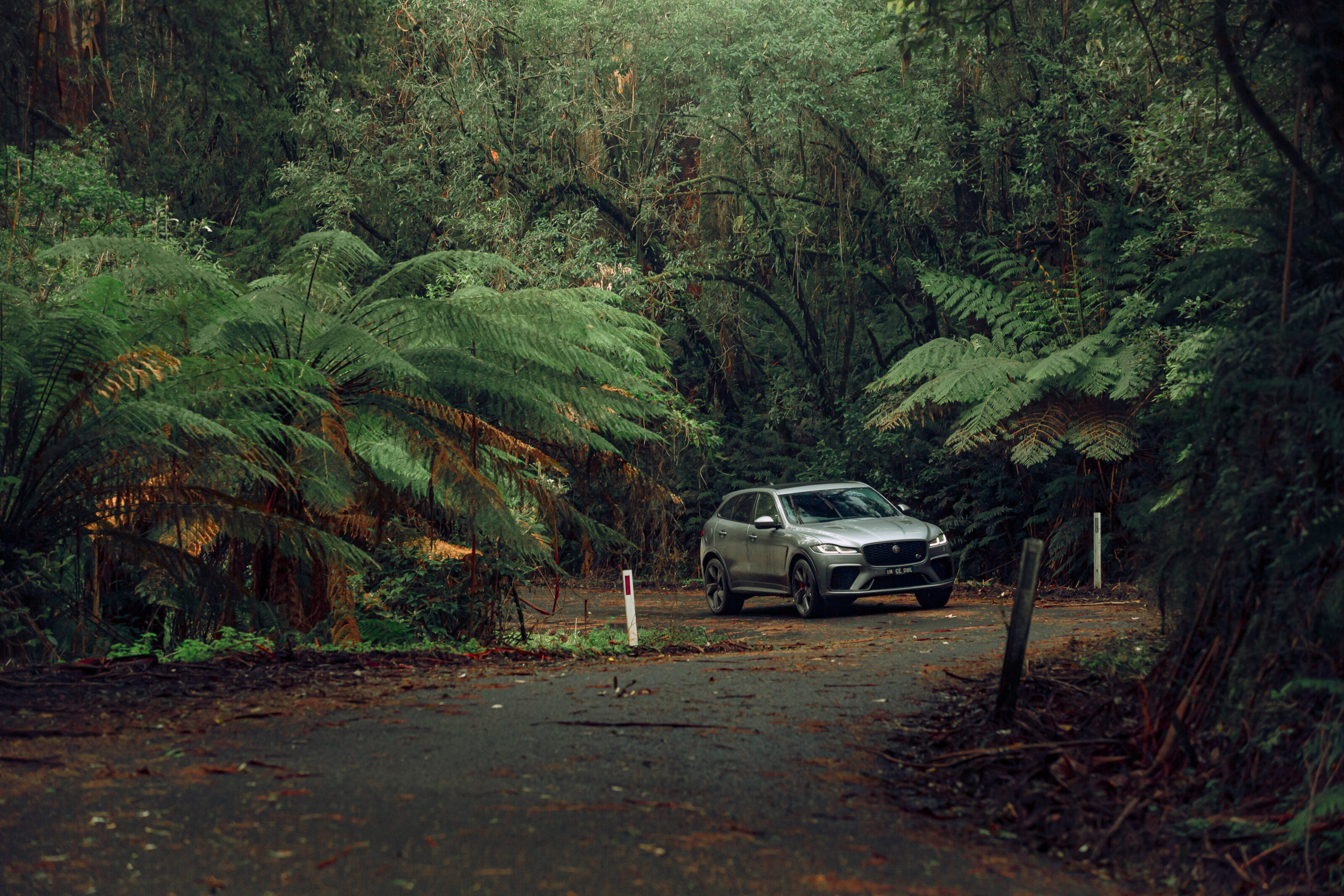
Logging of the Olongola Plantation to the south of Beech Forest is in full swing. We head east from the centre of town, and just before the protected native flora encloses around C159 the road passes a large cut of land that has been cleared. Lush green is replaced by the stark sand-coloured skin of felled timber.
It’s here that the only proof that Beech Forest remains populated can be seen, with workers operating machinery to move the fallen Californian Redwoods onto trucks to be transported to the next stage of their life. The town has been home to plenty of colourful characters in the past, with arguably the most famous being Cliff Young.
In 1983 Young was a 61-year-old potato farmer that decided to enter the inaugural Sydney-to-Melbourne Ultramarathon on a lark. He ended up winning the entire 960-kilometre event, running the course in five days and fifteen hours – nearly 10 hours quicker than his nearest competitor.
Just as Young’s competitors were left slack jawed at his incredible endurance, so do Jaguar’s rivals often underestimate the F-Pace SVR’s unique place within the Australian motoring landscape. It’s one of the more compelling but overlooked performance bargains on the market.
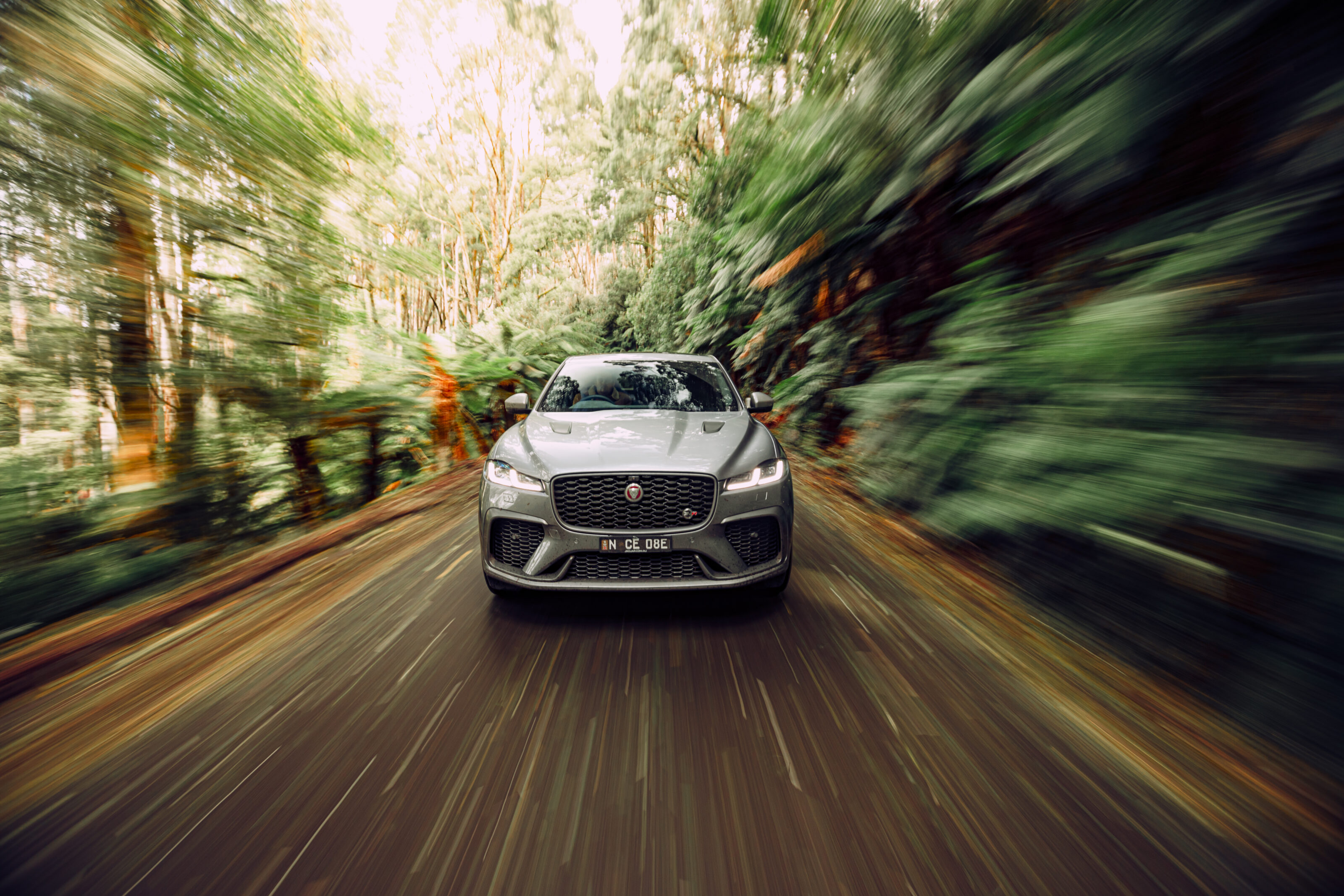
Want 400kW under your right foot? With a starting price of $142,300, the F-Pace SVR is the cheapest way into that exclusive power club. This is thanks to the now distinctly old-school combination of a relatively large capacity V8 with an Eaton-style supercharger placed atop to force great gales of air down its gullet.
There is all the usual luxury you’d expect of a full-fat performance SUV: comfortable and cosseting seats, heavily improved infotainment, heated seats and steering wheel, an expansive moon roof and more. But it’s that eight-cylinder tribute to the gods of fury and anger that dominates almost everything to do with the F-Pace SVR.
Absolute power corrupts absolutely? Not here, with engineers tweaking the SVR to deploy its brutal payload more effectively than ever. When the F-Pace SVR was launched locally in 2019 it was a crude instrument of blunt force. Fast, yes, but not at rewarding of subtlety.
Attempt to trail brake into bends, or do anything more complex than apply the simplest (and gentle) inputs and the SVR would throw its arms up in the air in a mess of discombobulated body roll.
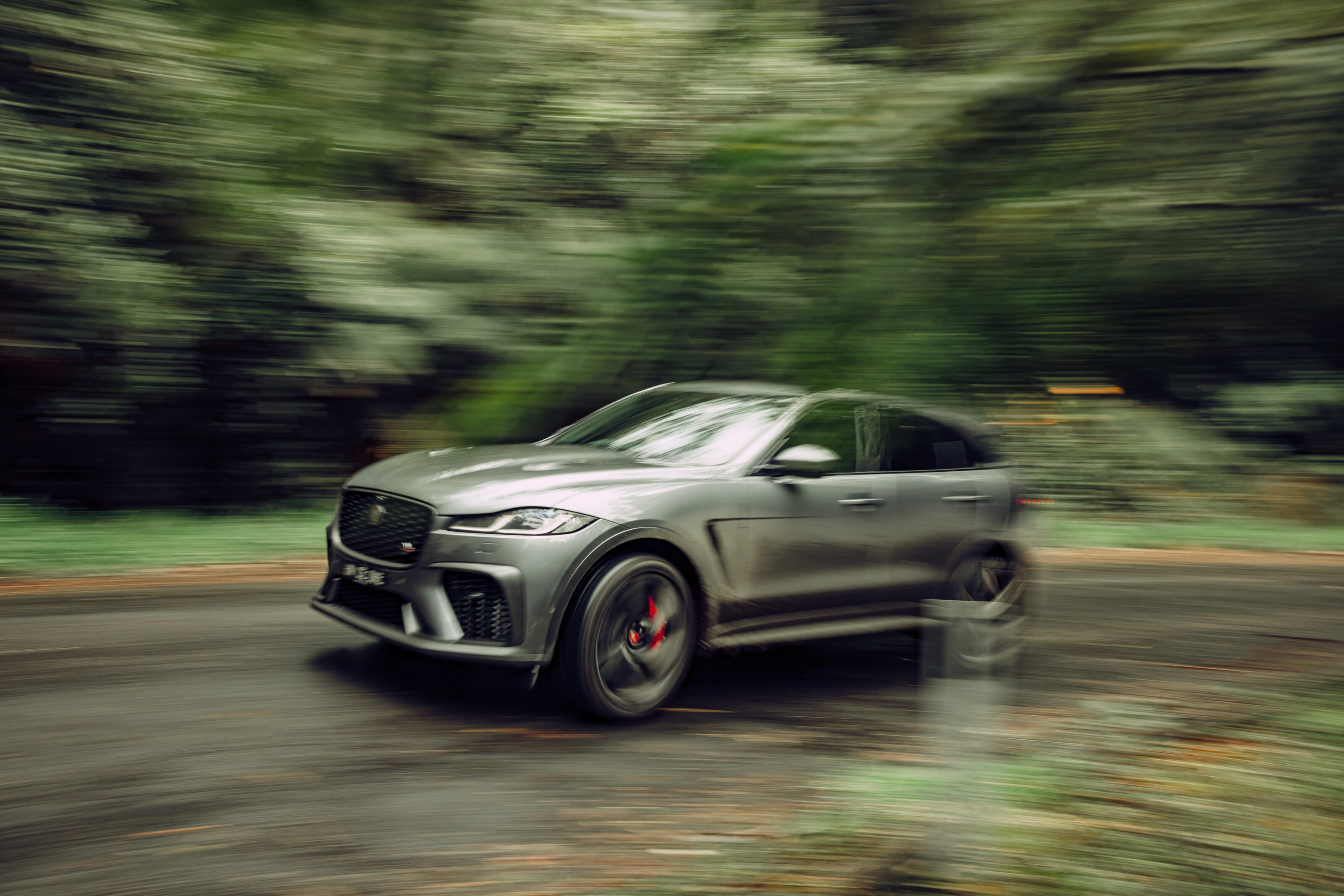
This updated facelift though, this is something altogether more refined. The engine remains unchanged and is as bombastically unrelenting as before, but it’s everything that surrounds the supercharged centrepiece that has been upgraded, tweaked or adjusted to better allow it to achieve its lofty highs. This included raiding the parts bin of its sedan siblings for a new transmission.
Jaguar has given the F-Pace SVR the eight-speed torque converter automatic found in the XE Project 8 super sedan that was bolted together by JLR’s Special Vehicle Operations skunkworks. This means all 405kW and 700Nm of the forced-induction V8 can be deployed in every gear, where previously torque figures were limited in lower ratios. Peak torque arrives at just 2000rpm, and is available all the way to five grand. There has also been a raft of tweaks to get this SUV to dance better on its toes.
Updated Bilstein adaptive dampers are the headline change bringing greater levels of body control, with the rear end of the F-Pace receiving particular attention. Two thirds of the bushings in the back half have been replaced, while all four corners feature new bump stops and stiffer toe links. The front axle has new lower control arms fitted, and the engine sits atop asymmetrical mounts.

Engineers have focused on maintaining vertical suspension travel to ensure ride comfort is maintained, while reducing lateral movement. There’s still body roll, even with the adaptive dampers in their most hunkered down setting, but instead of distracting from the task at hand the movements clearly telegraph the transfer of weight and grip throughout the cornering process. You can even attempt to trail brake now – how sophisticated!
The new gearbox sends power to a central mechanical differential that distributes power between the axles with an obvious rearward bias, with an electronically locking diff found on the aft unit. In normal conditions 70 per cent of torque is distributed to the rear tyres, with the F-Pace SVR’s most conservative split being a neat 50:50.
However, switch the driving mode to its most dynamic setting and 90 per cent of power travels the long way to the ground. Put simply, the F-Pace can turn itself into a 365kW/630Nm rear-drive monster, with the rest of its power reserves feebly playing the sensible sidekick via the front wheels. It’s exactly as lively as you’d expect.
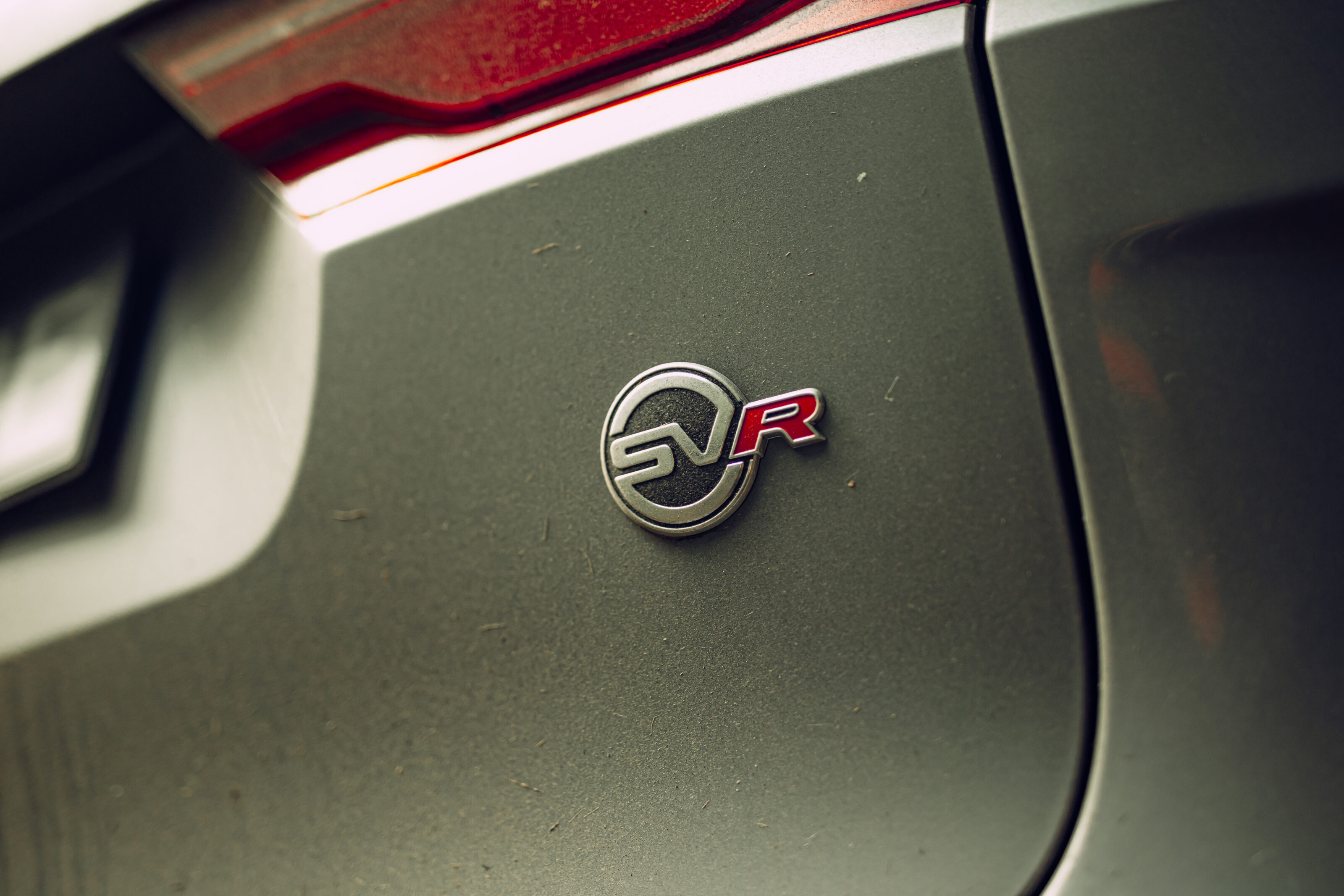
Hearing that, you’d be forgiven for thinking that Turton’s Track might be a confusing place to release the F-Pace SVR onto the world. It is described as the road that locals love to hate, and wasn’t covered in tarmac until 2008.
Before then it was a dirt line scrawled through the forest with the same level of purpose as the markings on a scribbly gum. Its popularity comes from the almost untouched pocket of forest that surrounds the thin, sinuous strip of bitumen. Tight and twisting, with an endless barrage of turns, Turton’s Track is not to be underestimated in any way.
The Jaguar’s Pirelli P Zero tyres do an impressive job of finding whatever purchase they can on the road, even when it is damp, mossy, and covered in tree litter – no small part thanks to 265/40R22 measurements up front, and 295/35R22 at the rear.
The razor-edge conditions mean the F-Pace’s full dynamic abilities are best saved for later in our trip. But outright pace in the bends isn’t the F-Pace SVR’s real modus operandi. Cackle-inducing fun is the name of the game, and it’s to be found under your right foot. Jab the throttle and the F-Pace throws its head back, nose waggling in the air like a boat getting on wake.
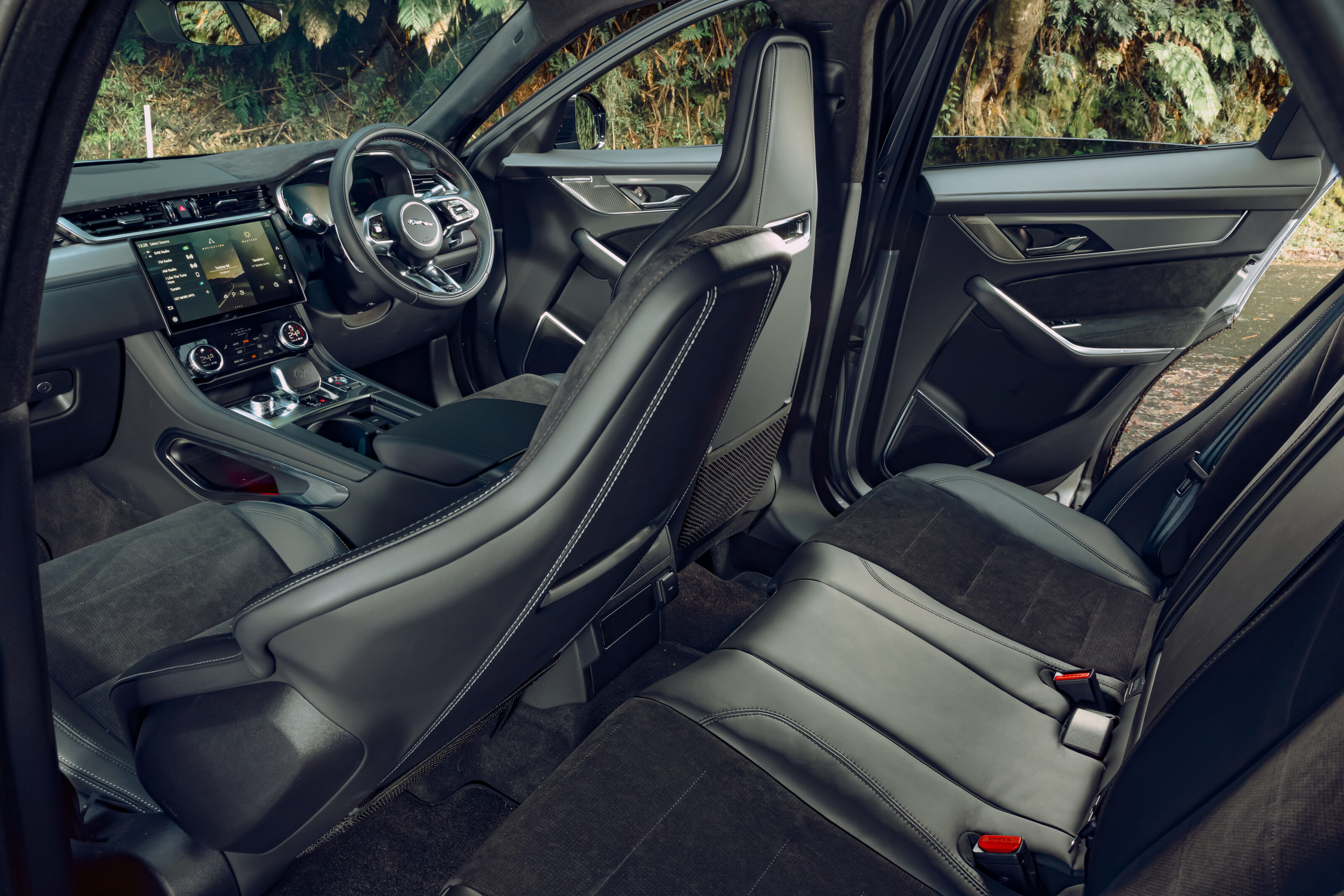
Previously it felt like the SVRs braking wasn’t match fit for the power and weight it wielded with such abandon. This wasn’t the fault of the mechanic aspect of the equation which remains unchanged with 395mm ventilated front discs grabbed by four-piston calipers and 396mm ventilated rear rotors clamped by a single-piston caliper. However, the booster has been adjusted, giving the driver more bite earlier in the pedal travel, with impressively improved feel.
It’s a reassuring feeling when the 405kW can be unleashed with frenetic urgency at the flex of the ankle. The supercharged V8 doesn’t really have a powerband, as that term would accurately describe the entire rev range. It is always eager to please, ready to attack on command.
The eight ratios in the automatic gearbox are stacked closely, meaning that even on a tight and technical road the F-Pace SVR will shuffle between gears in quick succession. Handy then, that the sound signature from the Jaguar’s four exhaust pipes is truly out of this world.
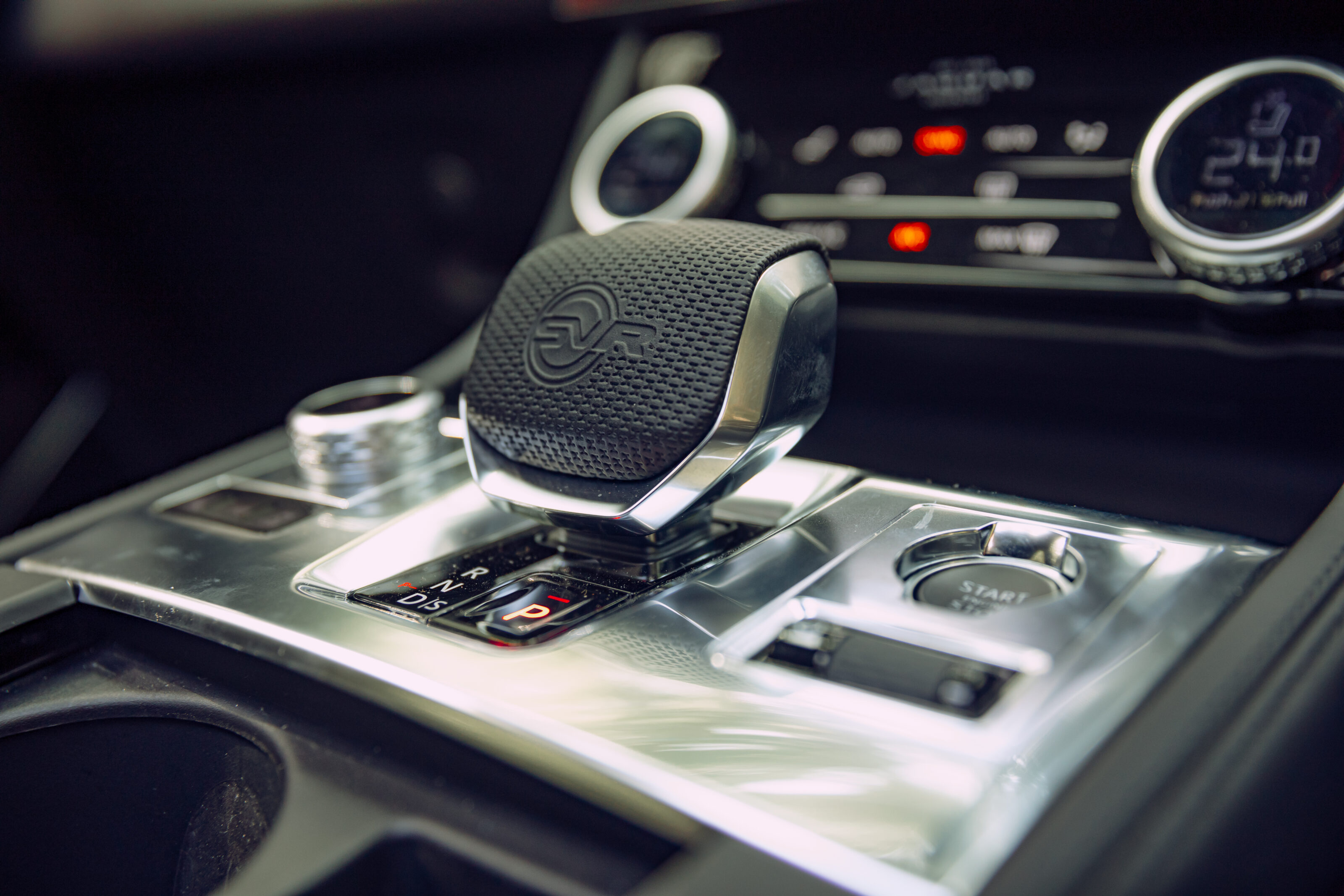
Just as your foot reaches the firewall, redline is upon you. Pull the metal paddle on the steering wheel and there is a brief pause before the exhaust clears its throat and goes again. By time the gear change is complete the next bend is upon you. Back down a gear and the off-throttle crackle sounds like thunder being forced back into the bottle.
The F-Pace SVR is caged in by the relentlessness of Turton’s Track, but at the same time it almost feels at home – shouting and barking to an audience of one mortal and a million silent onlookers. Today the road feels abandoned, and if left unattended for much longerit would be reclaimed entirely by nature. Deer and wallabies have replaced tourists, jaunting in the middle of the road.
There is no reprieve to be found on C159 once it plunges into the green depths of the forest unless you pull over and stop completely. I do just that to take a moment to soak in the visuals of the F-Pace SVR. It’s a remarkably resolved design, with loads of aggression thanks to large front intakes that curl upwards at the edges like the gaping maw of science fiction’s planet-hopping trophy hunter The Predator.
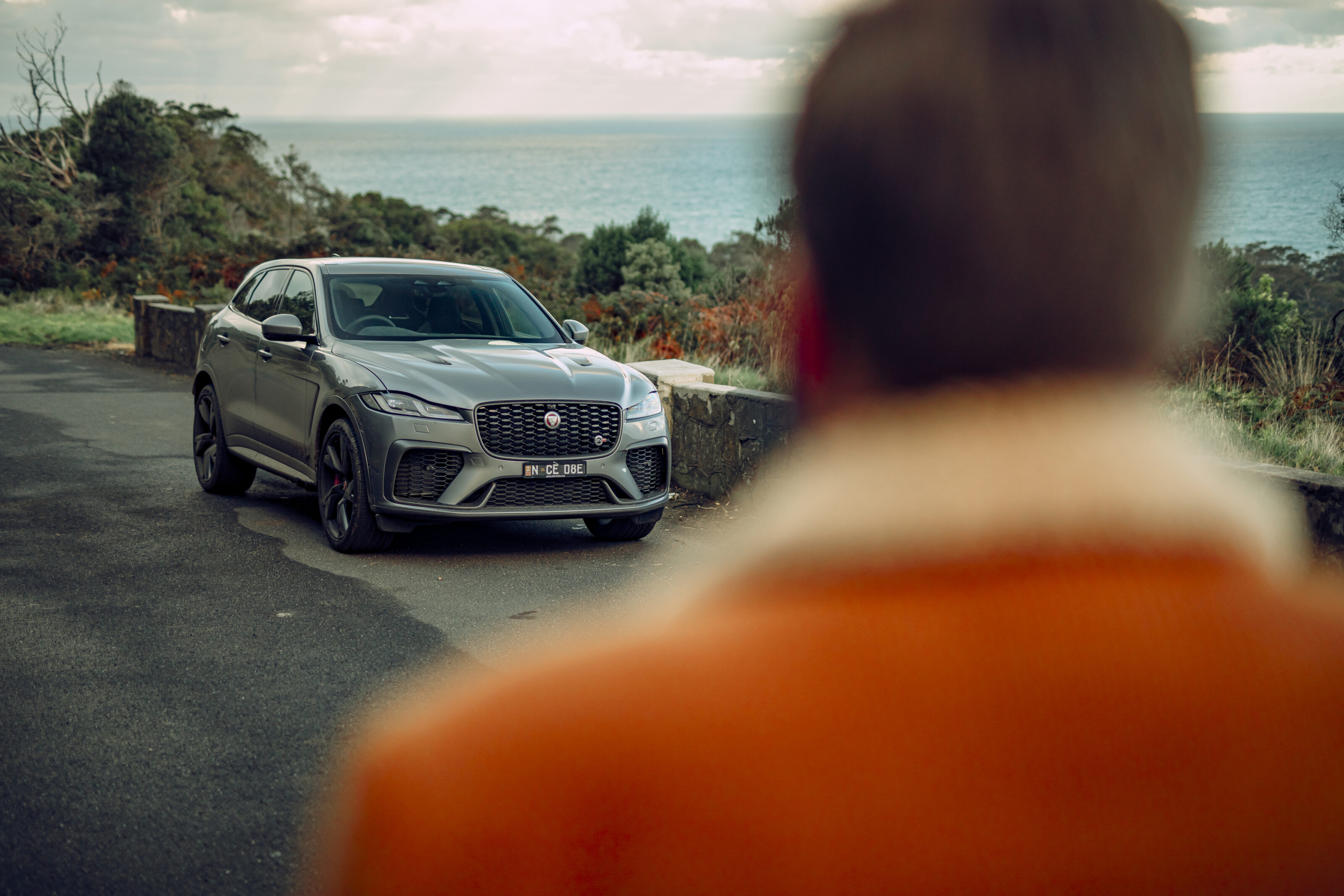
A pair of tall vertical slits sit behind the front wheels. These vents aren’t for cooling, instead helping shuffle air from out of the wheel wells to reduce front lift at speed. Today they are caked in a grime that has given our tester’s Eiger Grey paint a matte texture. Wet leaves have begun to stick to the aerodynamic cut-outs on the F-Pace’s lower flanks, feebly attempting to reclaim the car for the forest.
Half of the spine and ribcage of an animal much larger than me sits abandoned by the side of the road. I try not to think about what killed it, and why only half of the ribs are present. It’s eerily quiet here, with the loudest noises being blood in my ears sounding like a restless ocean. Or maybe it’s Bass Strait that is calling me from a direction I can no longer pinpoint.
A thick tree line and cloud cover means I can’t get a proper bead on the sun’s location, and the constant twisting of the route so far has my sense of direction tied into a frayed knot.
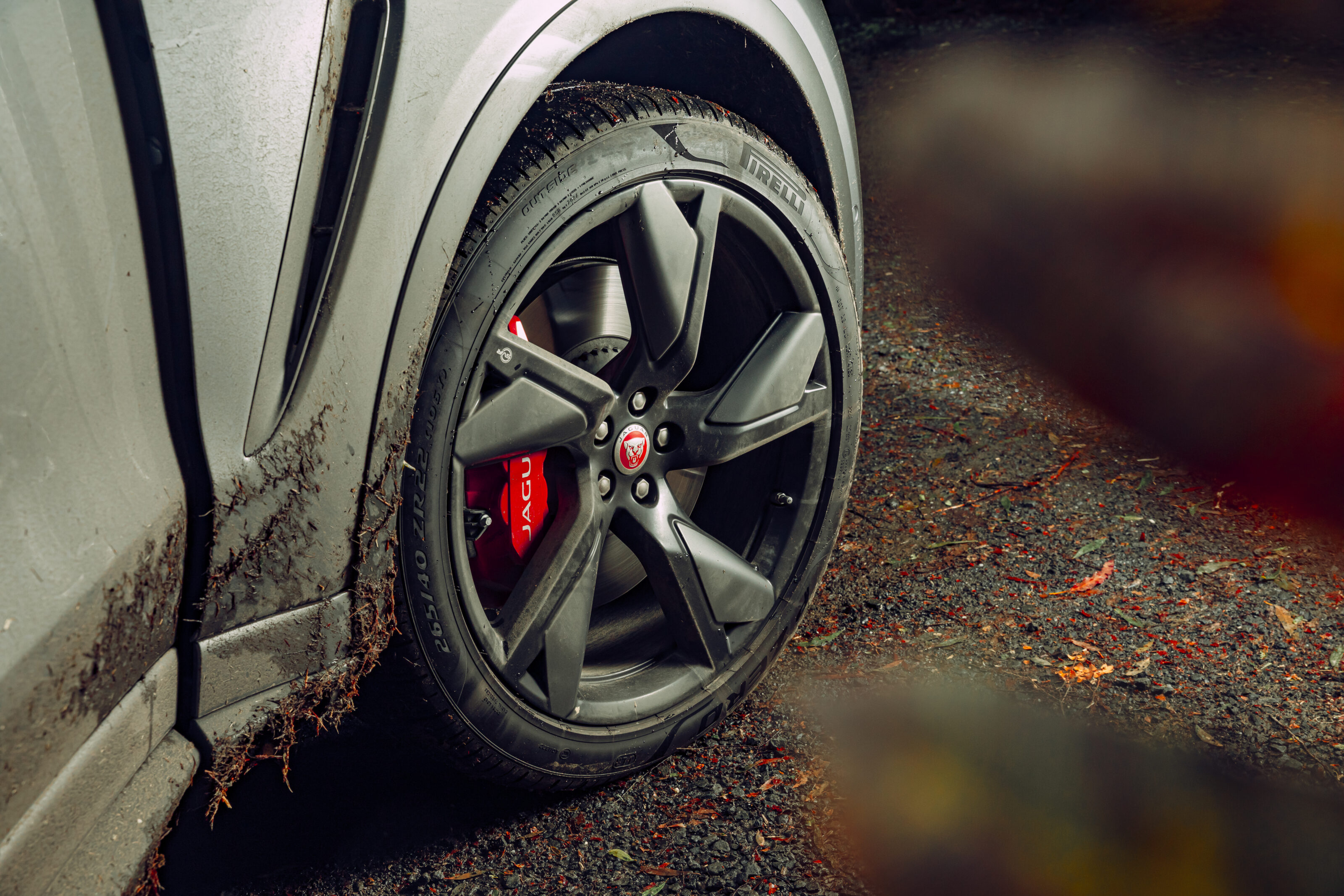
Ba-bum. Ba-bum. Ba-bum.
Time to continue the journey.
As overwhelming as the forest feels at the centre of C159, it is just a shell of what once spread across large swathes of the Otways. During the late 1800s and early 1900s settlers flocked to these fertile lands, jump-starting a timber boom that saw up to 29 different sawmills operate in the area around Beech Forest at its peak.
The first pub was built in 1888, to the west of the modern-day town. Legend has it J.W. Gardner constructed the 14-room building using the wood from a single giant mountain ash tree. A narrow-gauge runway started in construction in 1909, extending to Crowes and becoming the longest of its kind in Victoria by 1919.
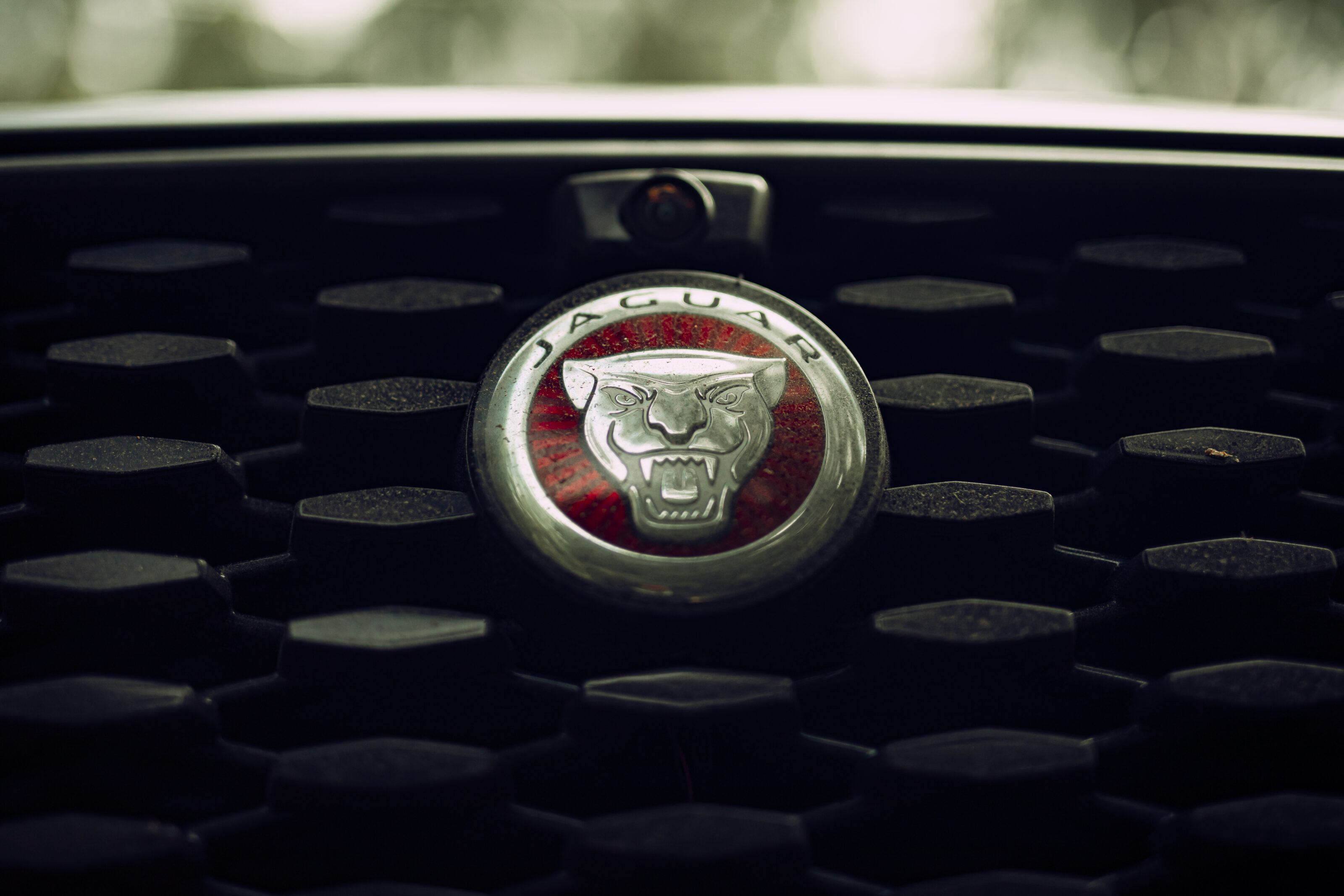
Timber was hauled out via this route, while the first cars – and gravel for roads – were brought in. In 1919 a fire had destroyed the entire settlement. An entire town built and lost, an industry boomed and crashed, all before the company that would eventually build this F-Pace was ever formed.
With Turton’s Track behind me I march onward to Skenes Creek via C119. Escaping C159 and onto this wider path is like night and day. No longer suffocating the F-Pace, the road opens up with fast, flowing bends that meander down the hillside toward the sea. Finally, all the hard work of Coventry’s chassis engineer’s bubbles to the surface.
A new steering calibration for the updated model plays a key part in engaging on these faster roads. It increases in weight naturally and progressively, giving ample feedback from the front wheels, and providing fine levels of accuracy off centre. Adjusting the way the rear differential locks means the SVR is now more eager to rotate during the mid-part of the corner. Though you’ll want to be pointed vaguely in the right direction by the time you get to full throttle as even 90 per cent of 405kW can overcome the 295-section rear tyres.
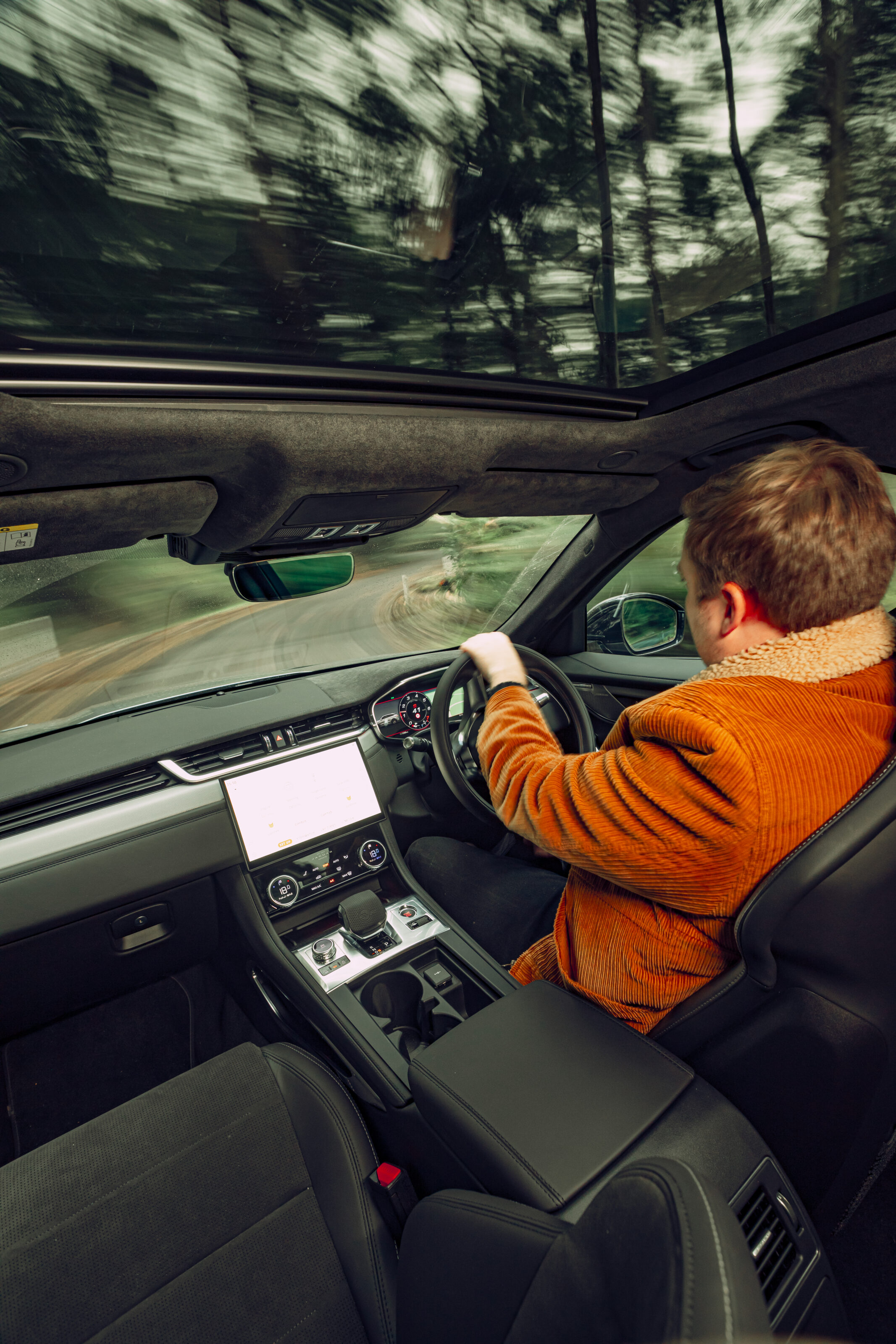
Away from the lower ratios I finally get to indulge in prolonged full-throttle antics. This has to be one of the finest sounding experiences in modern motoring. It’s an industrial sabre rattle that bellows across the valley for kilometres. No, that’s not an exaggeration. You’ll be heard long before you’re seen in the F-Pace SVR.
While this may all sound compelling, it’s also part of the F-Pace’s downfall. The Jag makes an excellent argument for itself in a vacuum, away from its current performance SUV rivals. The Porsche Macan Turbo is a sharper scalpel, and the Alfa Romeo Stelvio is a quicker straight-line missile. But the F-Pace SVR isn’t for perfectionists. It has flaws, and it relishes that fact.
This Jaguar is for drivers willing to take the good with the bad. Those who desire a V8 engine knowing it’ll put greater weight over the front nose. The people who see electronic anti-roll bars as an artificial barrier to greater involvement.
A few kilometres from the end of C119 and a royal azure horizon bursts into sight. The Bass Strait is still today, but despite the temporary calm you are always aware of its capability for unparalleled destructive fury. Where the sea holds its powers as a constant threat, the forest’s only defence from encroaching humanity is the mutually assured destruction of fire.
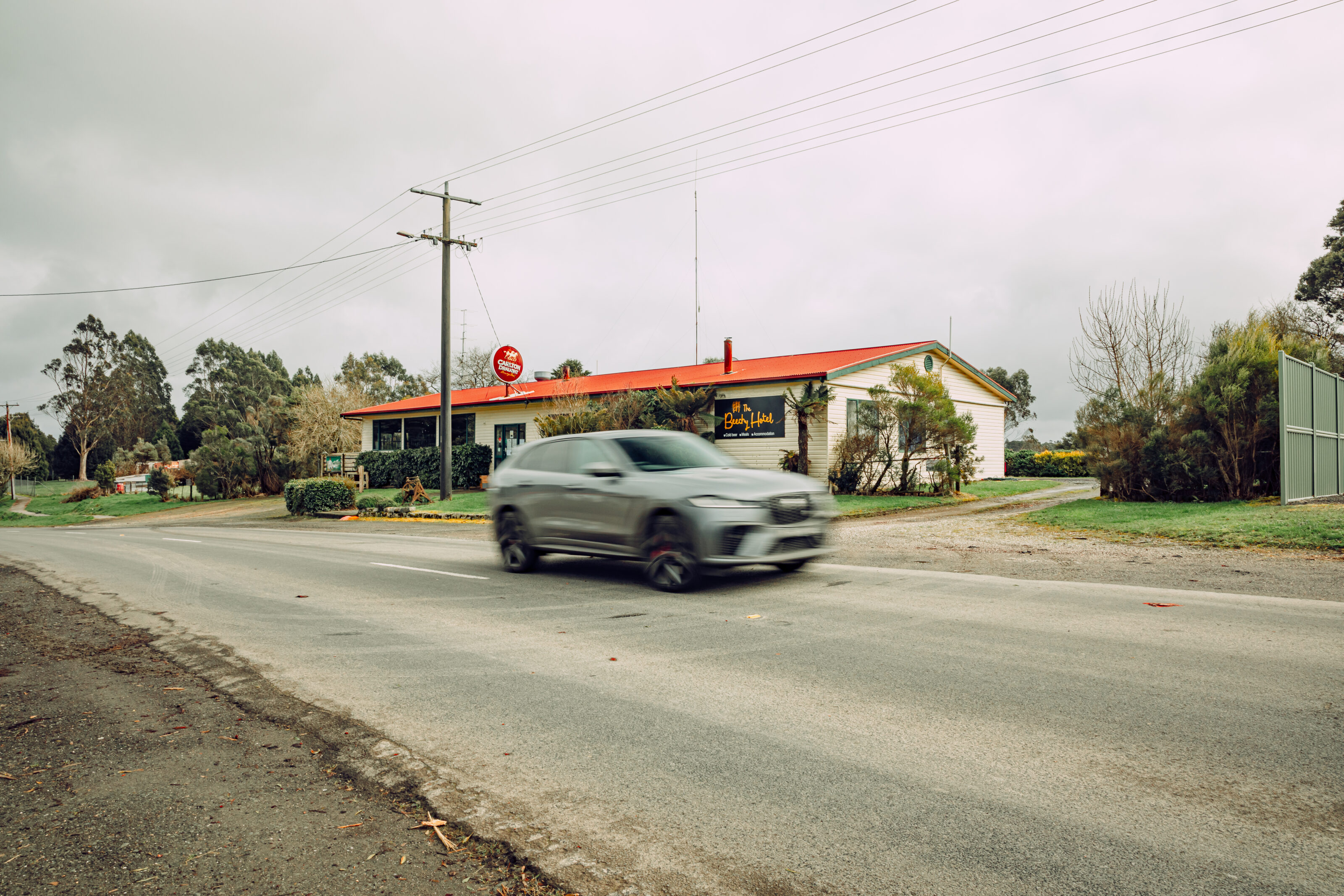
On the road south toward Skenes Creek the path is scarred by an arrow-straight fire break, trees bulldozed in a show of preventative force that will save both human and animal souls in the ever increasing heat of Australian summers.
Jaguar is about to embark on a similarly hard-nosed venture as a company, committing publicly to a fully electric future by 2030. Eight combustion chambers, as charismatic as they are, won’t be enough to carry the F-Pace SVR across that fire break. Meaning, in a game of power and glory, the F-Pace SVR sits atop a cursed throne.
Darkness descends and my time with the F-Pace draws to a close. The GPS says I have 198km to travel until the comfort of home, and the trip computer estimates 197km of fuel left in the tank. The combination of Turton’s Track and the F-Pace SVR frayed my nerves beyond the task of a late-night hypermiling challenge so I brim the tanks in silence before slipping back into the dripping ink of night.
Ba-bum. Ba-bum. Ba-bum.
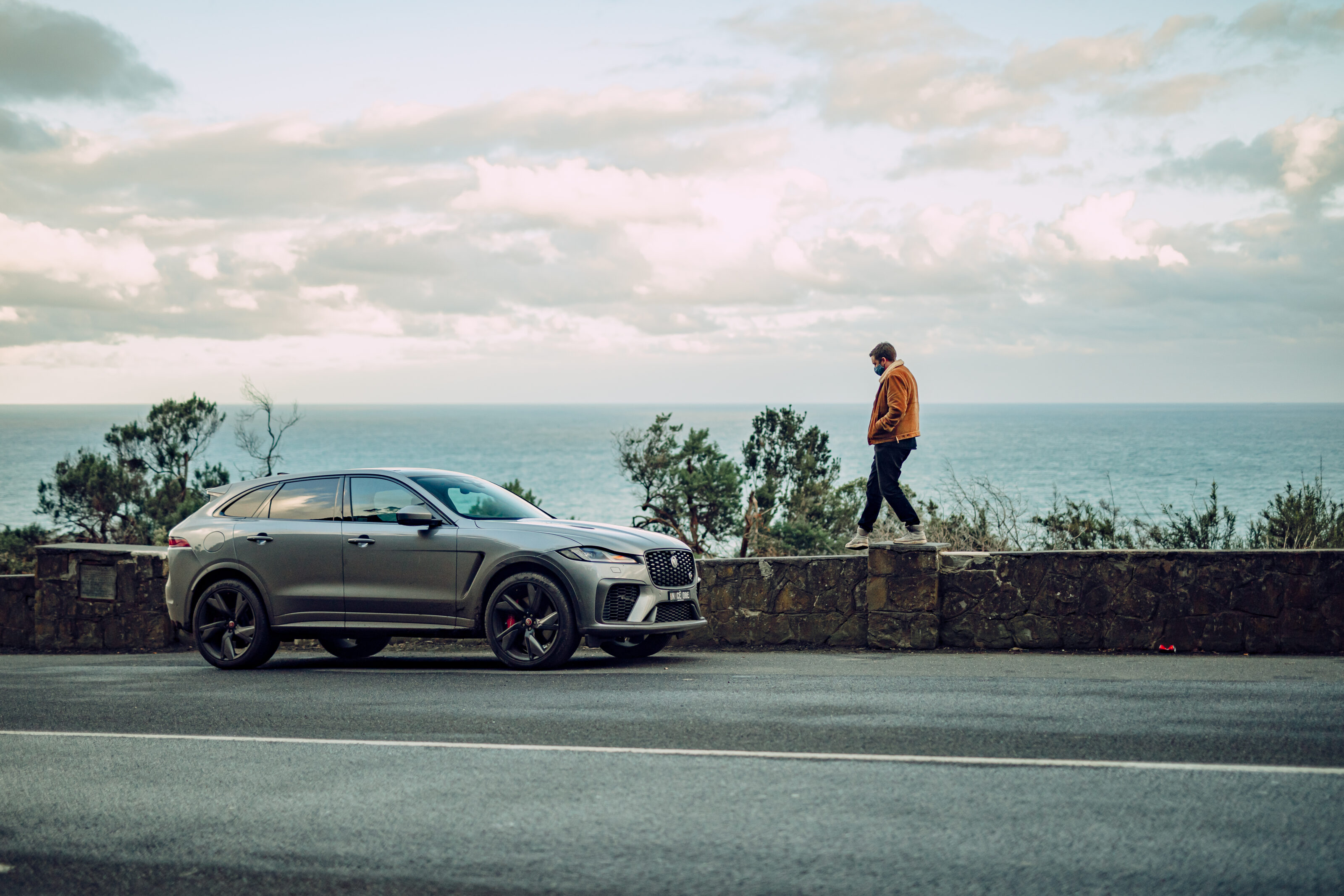
The Route
Length: 32 Kilometres
In normal circumstances this route is heavily trafficked, so be prepared to do more sight seeing than corner-carving. Keep your wits about you on Turton’s Track, blind corners abound, and two cars will struggle to pass each other comfortably at speed.
JAGUAR F-PACE SVR SPECS
Things we like
- V8 soundtrack
- Close-ratio ’box
- Engine response
Not so much
- Thirst for fuel
- It’s on death row
- Increased weight


